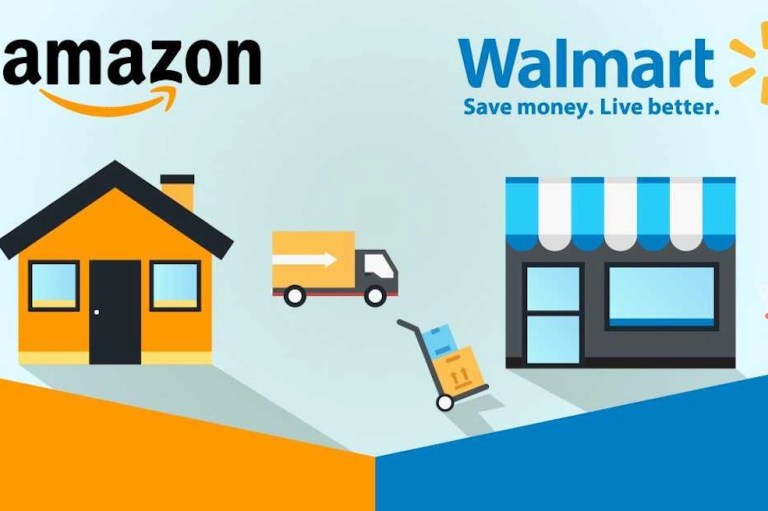
Online sales are up this year — and brick-and-mortar foot traffic is down — meaning Walmart is about to find out in real time if its billions invested in leveling up its eCommerce capacity is making a dent in Amazon’s online dominance.
“The big test [for Walmart] of course is this holiday, and there are signs that they are doing better both in-store and online,” said Neil Saunders, an analyst at retail research firm Conlumino. “Although Walmart is very competitive on price, many consumers assume Amazon has the lowest prices. It’s a marketing challenge as much as any, as a lot of people who shop on Amazon are not naturally Walmart shoppers.”
The early numbers are encouraging, as Walmart had a record number of visitors to its online and mobile sites during the “official” holiday retail kickoff weekend post-Thanksgiving. But there are also reasons for concern — Walmart is catching more customers with its eCommerce efforts, but its online market share actually slipped a point to 4.1 percent during the same time period.
Walmart is also expanding its lineup of goods with its marketplace feature in an attempt to expand its base of customers. This season will see Walmart carrying a digital product assortment of 23 million goods. Expanding that front-end selection has meant building out its back-end; in the last year alone, Big Blue has built five new “mega” fulfillment centers that use advanced automation to retrieve items. That brings its total to 10 nationwide.
A big jump — but small next to Amazon’s hundreds of millions of marketplace products and 70 fulfillment centers across the U.S. Amazon has also expanded its eCommerce empire to include consumer-facing tech like the Echo and Dot to bolster their efforts — on Black Friday alone, consumers were voice-searching Amazon’s Echo speaker at a rate of 30 interactions per second, the company said.
But Walmart does not enter the battle unarmed — it clocks around $500 billion in annual sales worldwide and is much more profitable than Amazon, with a margin on earnings before interest and tax of 4.8 percent compared with Amazon’s 3.2 percent.
“If Walmart gets the model right with stores and online, in capability terms it could trounce Amazon,” Conlumino’s Saunders said. “Walmart has one of the best coverages in the U.S. of any retailer. It has a logistics network that’s profitable and extremely efficient.”
“Walmart appears to know what it needs to do, and is smart enough to know that it needs others to help it accomplish this,” said Tim Barrett, an analyst at Euromonitor. “Whether or not its own corporate mass and inertia will allow for the proper execution of these strategies is anybody’s guess right now, but 2016 was a step in the right direction for the company.”